Before Typhoon Rai (called Odette in the Philippines) made its landfall in Cebu, City, preparations such as cutting the big branches of the trees and safely piling them in the front yard were already made to minimize risks and hazards in the facility. The residents and houseparents prepared the plastic drums to store water, secured the appliances and furniture in the living room, and ensured the safety of Teen/Young Adult Transitional Home for the upcoming Typhoon.
On December 16th, 2021, Typhoon Odette made landfall in Cebu, City. The staff and residents evacuated for safety and emergency purposes as the wind rose and the typhoon became stronger. The residents felt scared and nervous, as it was the strongest typhoon they have experienced so far. Nonetheless, everyone was calmly praying and reminding one another of the presence and goodness of God despite the calamity. By 11:00 PM, the typhoon had already slightly weakened.
Typhoon Odette left a lot of places devastated with broken homes, downed trees, and loss of electricity, signal, and water supply for days. Fortunately, Teen/Young Adult Transitional Home had a generator that provided the ability to pump water and electricity for light and charging. Some of the trees in Teen/Young Adult Transitional Home also tumbled down, and the debris, iron sheets, and woods were scattered inside the facility. There are also minimal damages in the ceiling of the living room, the roof in the washroom, and broken flower pots. The door separating the facility and CSC Office was also destroyed by the typhoon. The Teen/Young Adult Transitional Home residents took 3-4 days to clean and clear the storm debris. No staff or resident was hurt or injured during the typhoon.
The Typhoon also caused stress and anxiety to the Teen/Young Adult Transitional Home houseparents and residents, especially worrying about the safety and security of their families, relatives, and friends. Consequently, Stress Debriefing Activity was conducted for Teen/Young Adult Transitional Home residents to reduce their stress and help them recover from the overwhelming situation. Through this activity, they recognized their feelings, worries, and stress from the typhoon. The residents also shared their coping mechanisms when dealing with difficult situations. Some of the coping strategies mentioned were reading the Bible, making arts and fictional stories, meditation, watching television, listening to radio/ music, cleaning, planting, and more. Furthermore, the activity ended with breathing exercises to calm and relax their body and mind. Currently, the Teen/Young Adult Transitional Home and the residents are now back to their normal daily activities.
It seems that there is just one crisis after another and we have heard of the desires of the residents to be finally free or "unstuck". In the midst of recovery from the Typhoon and Covid-19 pandemic, the Teen/Young Adult Transitional Home Program continues to look forward to helping its residents take steps to build their future.
Please pray with us as we think of strategies that are safe, yet relevant and meet the needs of the residents who desire to look forward to the day that they can be reintegrated back into the community.
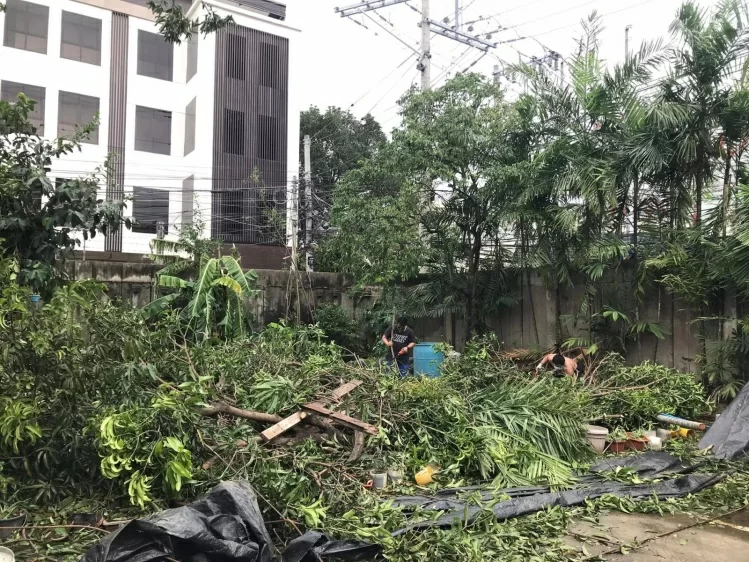 The front yard of Teen/Young Adult Transitional Home facility, during the onslaught of Typhoon Odette
The front yard of Teen/Young Adult Transitional Home facility, during the onslaught of Typhoon Odette
Residents help clear the tree branches and other storm debris in the front yard and parking area.
 Resident helped remove the branches of the tree on the facility's roof.
Resident helped remove the branches of the tree on the facility's roof.
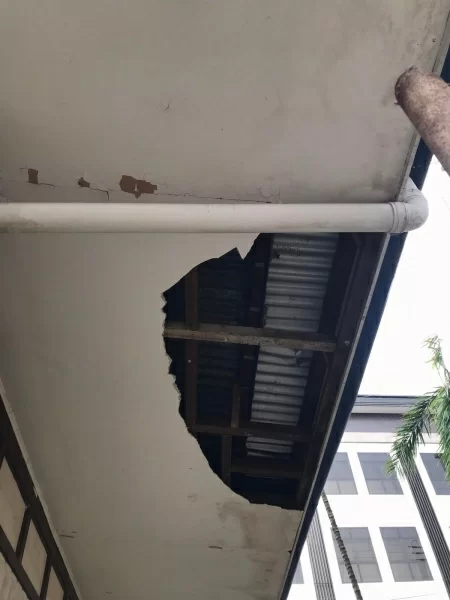
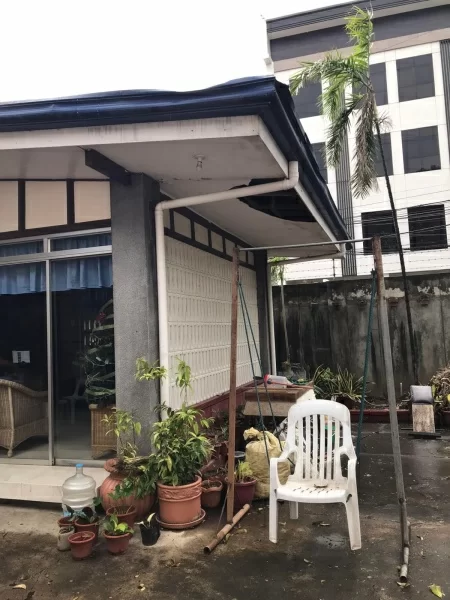 Teen/Young Adult Transitional Home Living Area after Typhoon Odette
Teen/Young Adult Transitional Home Living Area after Typhoon Odette
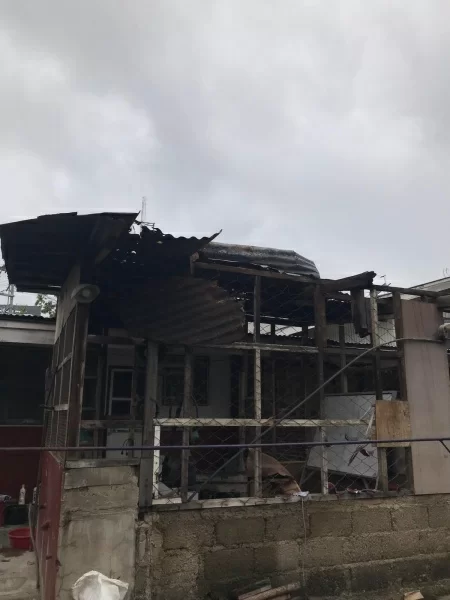
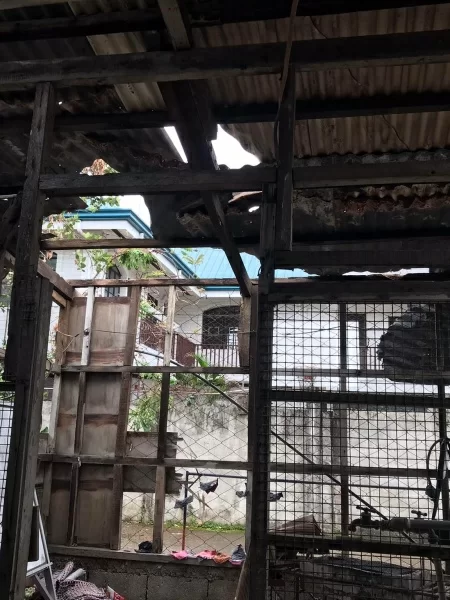 The current condition of the washroom after Typhoon Odette.
The current condition of the washroom after Typhoon Odette.
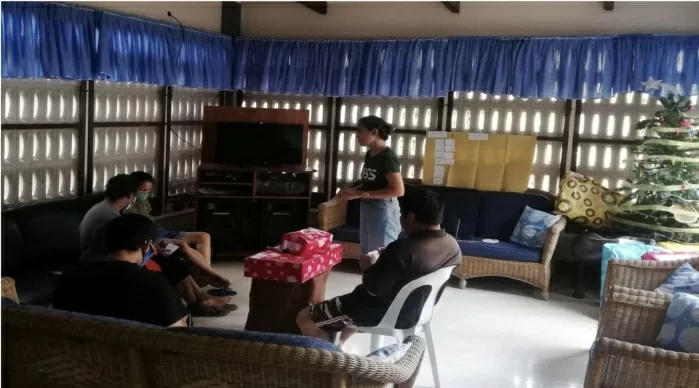 Stress Debriefing Activity to Teen/Young Adult Transitional Home residents on December 21, 2021.
Stress Debriefing Activity to Teen/Young Adult Transitional Home residents on December 21, 2021.
Who is the teacher?
Teacher Kristen is new to the CCHS team and we are so glad she is with us. Read on to find out what lesson she learned in her first few weeks on the job.

This is my first year ever teaching and I am so glad to be at Cebu Children of Hope School! The things they taught me in college have prepared me for the classroom, but only to a certain point. I've been struggling a bit with new routines and new students. I have tried many of the strategies I learned in college to help students focus in class but they haven't helped much.
I remember when I was a student like them. School was tiring for me as I had to sit most of the day and just listen to the teacher. Not very fun. When I started teaching this year I realized I was doing the same thing my past teachers did, things that made me, as a student, bored. In the first few weeks of school my students at CCHS taught me that I was too idealistic when it came to teaching. They taught me that I needed to cool down and start embracing their unique qualities.
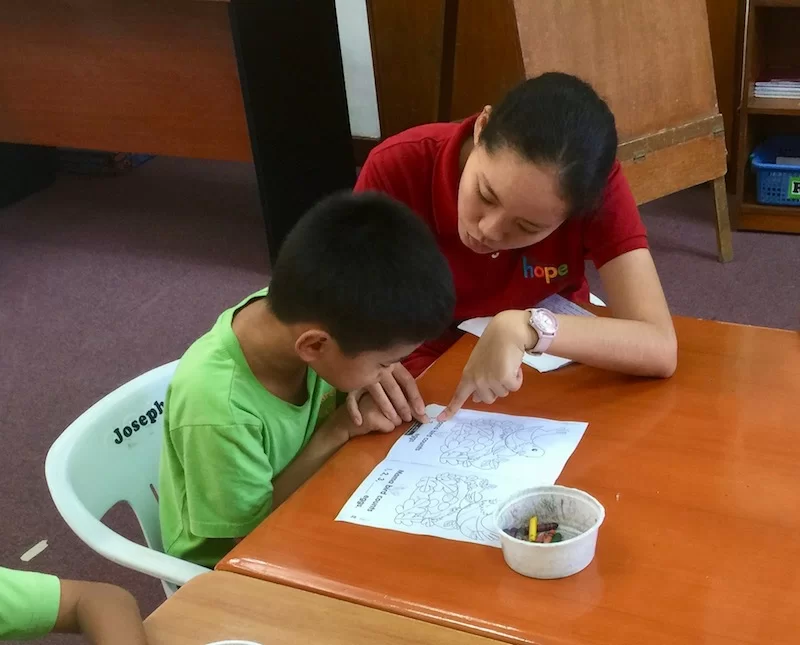
Once I realized this I made some changes in my classroom. I started to really listen to them and smile more. Very quickly I saw changes in their behavior. Now I am having fun teaching them and I love how they respond in class- showing excitement to learn!
Teachers are supposed to be the ones to teach kids. At CCHS I have learned that often kids can be great teachers.
Preschoolers and Plants
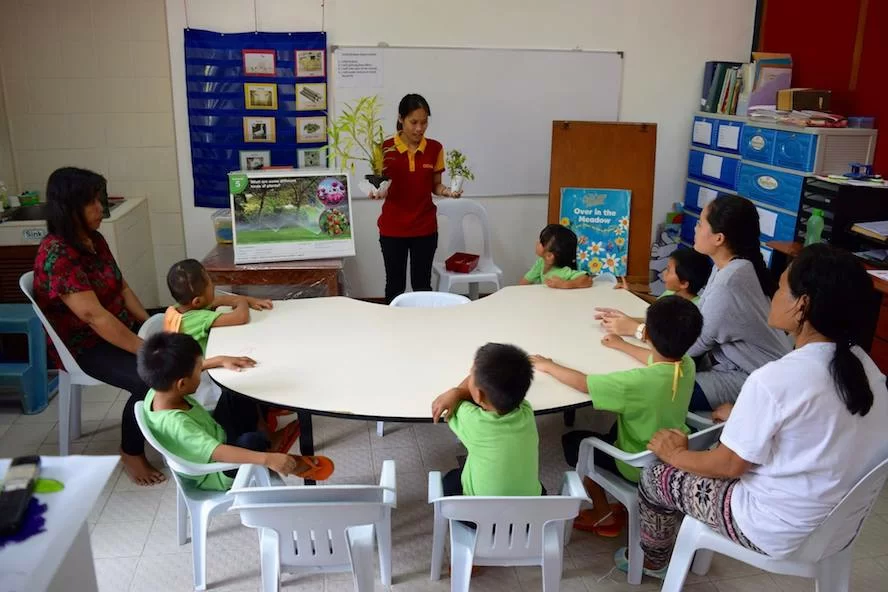
The preschoolers have been learning about the difference between living things and nonliving things. One example of a living thing, which we have been studying a lot about, is a plant. Every time I review with the children they say, "Sige ug balik" (It's a repeat). By the end of the unit the preschoolers were able to identify a plant, tree, shrub, vegetable, and grass. They also learned the parts of the plant (stem, flower, fruit, and roots) and where plants live (in desserts, farms, forests, and gardens).
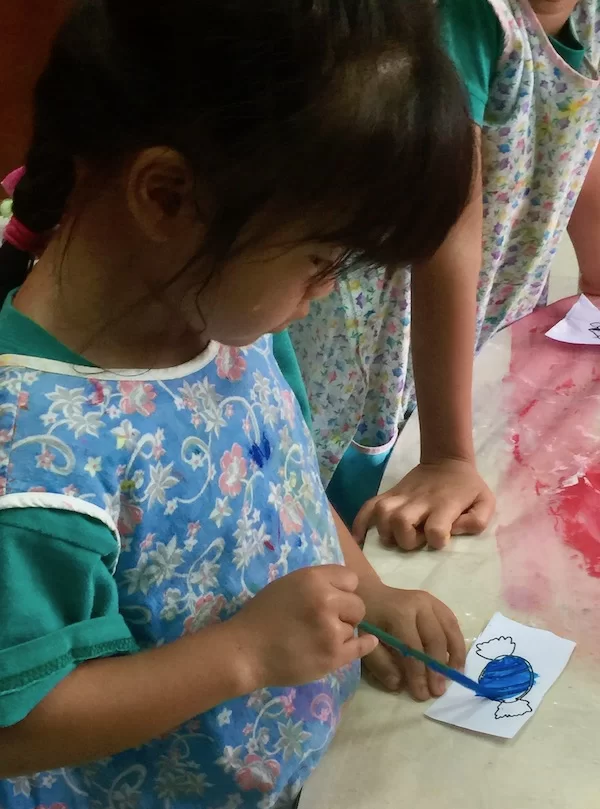 One of my favorite parts of the unit was taking the preschoolers outside for a mini field trip. Our school is surrounded by many different kinds of plants. On our "living things walk" we saw many banana trees, mango trees, and even an avocado tree. The preschoolers loved searching for living things and telling us what they found.
One of my favorite parts of the unit was taking the preschoolers outside for a mini field trip. Our school is surrounded by many different kinds of plants. On our "living things walk" we saw many banana trees, mango trees, and even an avocado tree. The preschoolers loved searching for living things and telling us what they found.
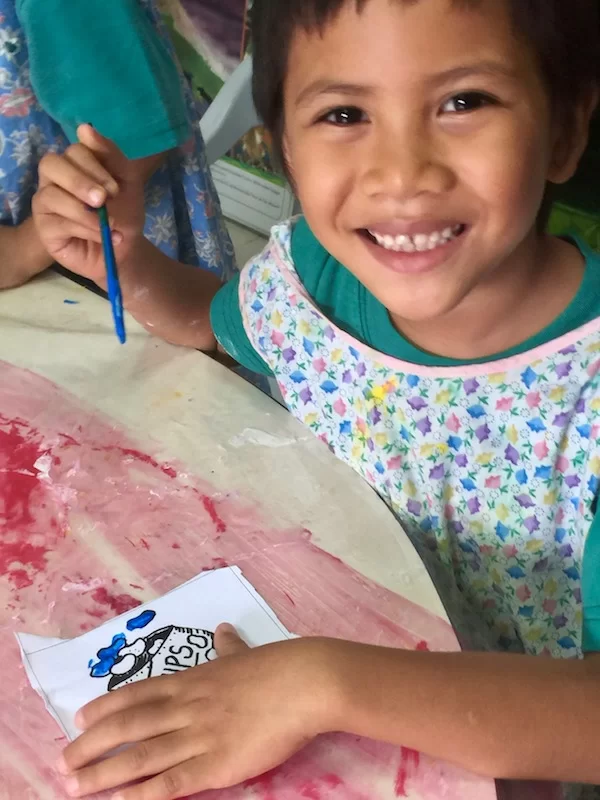
What a joy it was teaching the preschoolers about plants. We had a fun time learning together!
Creative Minds
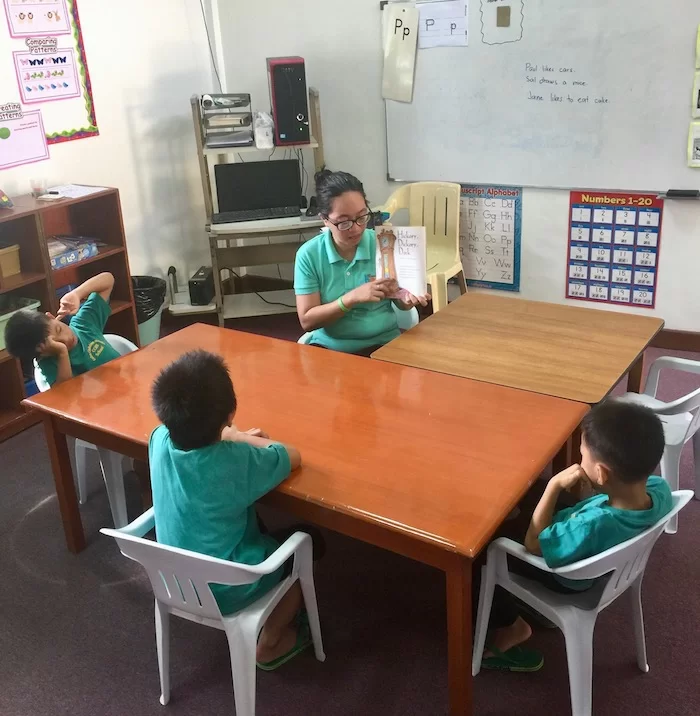
Having conversations with my students helps them learn to interact with their peers and teachers. It has a great impact on their learning and ability to listen as well.
I started this year with just three kids in my classroom. Three kids who love conversation and enjoy sharing their thoughts. One afternoon, during Civics class, one of my students shared with me about one of the CSC aunties (child care workers).
Student 1: Teacher, our auntie just had a baby! (saying it excitedly)
Me: Wow, that's great! Do you know if the baby is a boy or a girl?
Student 1: I don't know.
Student 2: Teacher, I know where the baby comes out.
Me: Where?
Student 2: Here! (referring to his bottom)
Student 1: No Teacher! I heard that a baby comes out from your belly button.
Student 3: Teacher, I know where babies come out of, here in our back.
Student 1: (reacting with a shocked face) No, the baby can't come out of there!
Me: Why?
Student 1: Because our back has a lot of bones. The baby will get hurt!
I love teaching at Cebu Children of Hope School for many reasons. One of them is the creative minds these little children have. You never know what ideas they will share.
Goodbye Up There!
Child welfare types refer to children who become very close while in care at a place like CSC as "institutional siblings." They are not siblings by blood but by affinity. Many of our children experience that kind of relationship while living at CSC. For the younger ones, they don't understand the difference. Such was the case with little Jacob. He had four very good buddies in the Eicher Home nursery. They spent lots of time together eating and playing. They looked out for each other, fought like true siblings and were known to tattle on each other on occasion.
Recently, Jacob was adopted by a great family from Europe. Shortly before Jacob's family came to get him, two of his pals got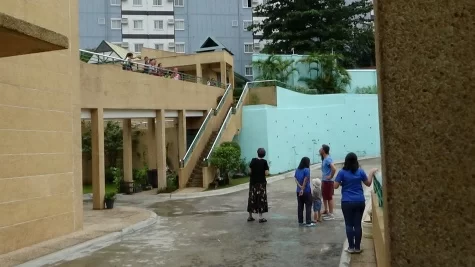 sick and had to be in isolation. Their ailment was very contagious. We worried that Jake, too, would get sick when he was supposed to travel but, thankfully, that didn't happen. But we felt bad that Jake wouldn't be able to say goodbye to his buddies. So Marlys came up with a plan. The infirmary caregivers brought the sick children outside to the bridge and Jake was able to look up, see them and say goodbye. The overhead kids shouted "bye-bye" and it was very touching. Certainly they didn't understand that he was going far away and they might never see him again. But they knew something big was up.
sick and had to be in isolation. Their ailment was very contagious. We worried that Jake, too, would get sick when he was supposed to travel but, thankfully, that didn't happen. But we felt bad that Jake wouldn't be able to say goodbye to his buddies. So Marlys came up with a plan. The infirmary caregivers brought the sick children outside to the bridge and Jake was able to look up, see them and say goodbye. The overhead kids shouted "bye-bye" and it was very touching. Certainly they didn't understand that he was going far away and they might never see him again. But they knew something big was up.
There is lots of love at CSC. Jacob experienced that from house parents, child care workers, staff and the other children. Now he will be feeling the love of a family. And a new sibling that will be his forever.
Science Can Be Funny
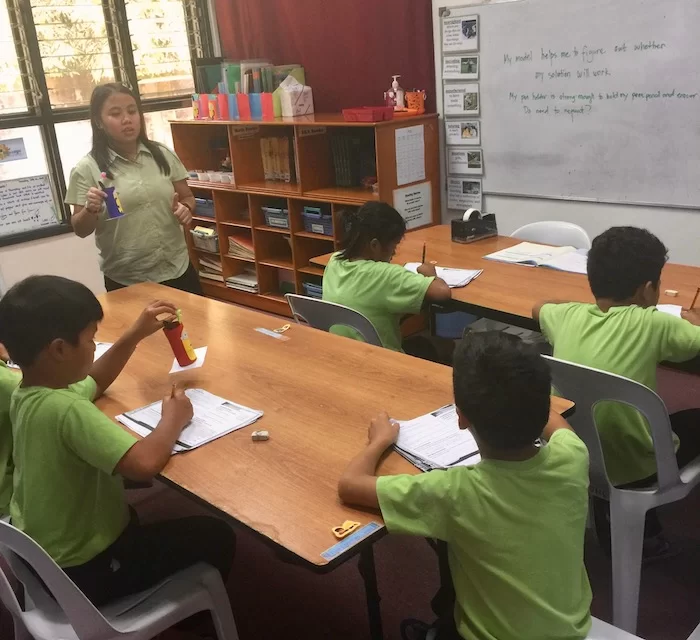
The official school year has begun at CSC! Teacher Lyrah, one of our dedicated and gifted teachers, shared about a science lesson she taught the other day:
Everyone was ready and calm as I stepped into the classroom. The students seemed very excited for the afternoon's discussion entitled "The Scientist and the Science tools."
I asked my students about the science tools and the brainstorming happened like this:
TEACHER: Can you still remember some of the science tools that you learned about last year in your class?
STUDENTS: Yes, Teacher Lyrah!
TEACHER: Tell me about one of those science tools.
STUDENT 1: Teacher, a hand lens.
STUDENT 2: How about a balance?
STUDENT 3: A measuring cup.
STUDENT 4: Thermometer!
TEACHER: WOW! You are really thinking about these tools. What are some others?
I called on one student who hadn't answered yet.
TEACHER: Okay, what is it?
He was very hesitant about his tool and just smiled again.
STUDENT 5: Teacher, how about a telecopter?
He was laughing so hard because he mentioned the tool in a different way. Everyone in the class was puzzled about his answer.
STUDENT 1: What do you mean a telecopter?
Student 5 laughed so hard and kept on saying the word telecopter.
STUDENT 5: (laughing) Teacher, what I mean is a telescope not a telecopter!
TEACHER: A telecopter? That word is a combination of a telescope and a helicopter. Isn't it?
He laughed and said: " Yes, teacher because we use a telescope to see the stars and other flying objects like helicopters."
Then I remembered the time last year when I showed them a telescope and we talked about how it worked.
Everyone in the classroom was amazed with his great new word invention!






